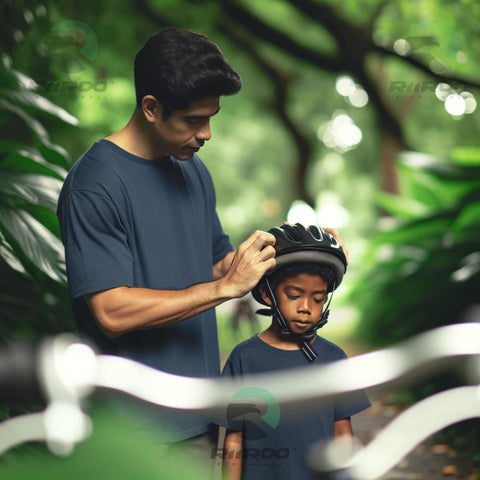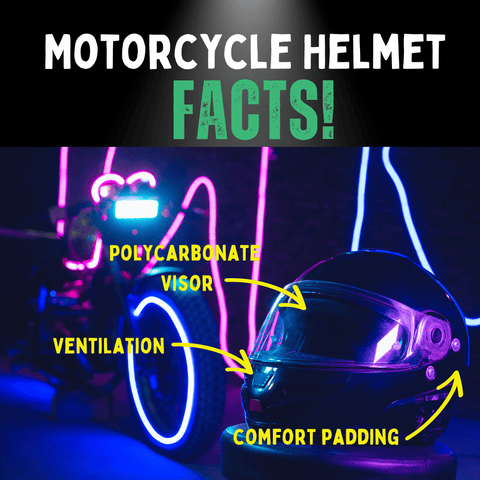Published: 04.10.23
Updated: 27.05.25

Ensuring children’s safety during outdoor activities like cycling, skateboarding, or riding electric toys is paramount. A key question for parents and caregivers is: do kids need to wear helmets?
Let’s explore why helmets are essential for children’s safety, comparing perspectives from the UK and US, and share tips to keep young adventurers protected.
1. Why Helmets Are Essential
Helmets are critical for reducing the risk of serious head injuries, which can have lifelong consequences. They protect the brain, face, and head during falls or accidents, far beyond preventing minor scrapes.
Studies show helmets reduce head injury risk by 63–88%, severe traumatic brain injury by 60–69%, and fatal head injury by 65–73% for cyclists of all ages. For children, this protection is vital during high-energy activities.
Explore our kids’ ride-on motorbikes for safe, fun adventures.
Related: The Role of Helmets in Keeping Kids Safe on Quads
Helmet Standards: UK vs. US
| Country | Helmet Law | Recommended Age | Safety Standards |
|---|---|---|---|
| UK | Not mandatory | All ages | BS EN 1078 |
| US | Mandatory for children (varies by state) | Typically under 18 | CPSC |
In the UK, helmets aren’t legally required but are strongly recommended. In the US, many states mandate helmets for children under 18, with the CPSC setting rigorous standards. Choose helmets with thick polystyrene or foam layers to cushion impacts and prevent brain injuries.
2. Proper Helmet Fit
| Fit Factor | Description |
|---|---|
| Helmet Position | Level on head, covering forehead |
| Strap Adjustment | Snug under chin, no slack |
| Comfort | No pressure points or discomfort |
A poorly fitting helmet reduces protection. Ensure it sits level, covers the forehead, and has snug straps. The Helmet Fit Test is a reliable way to check fit, whether in Birmingham or Boston.
3. Helmets for Different Activities
Different activities require specific helmet fits. Cycling helmets should sit level and cover the forehead, while skateboarding helmets often protect more of the head’s back due to varied fall patterns. For ride-on toys, ensure helmets meet activity-specific safety standards.
Related: 10 Crucial Facts About Motorcycle Helmets
4. Parental Role in Modeling Safety
Children learn by example. Parents wearing helmets during activities set a strong precedent, instilling lifelong safety habits. This applies universally, reinforcing the importance of protective gear.
5. Helmet Maintenance and Replacement
Damaged helmets lose effectiveness. Replace them after significant impacts or if they no longer fit due to growth. Regular checks ensure optimal protection, especially for fast-growing kids.
6. Helmet Laws and Regulations
In the US, many states mandate helmets for child cyclists, reducing fatalities by about 15% long-term. The UK recommends but doesn’t require helmets. Always follow local laws and prioritise safety standards like BS EN 1078 or CPSC.

7. Safety Tips for Young Riders
- Ride on sidewalks or designated paths to avoid traffic.
- Use hand signals to communicate intentions.
- Wear bright clothing for visibility.
- Ensure adult supervision until children are confident riders.
These practices, combined with helmets, enhance safety globally.
8. Encouraging Helmet Use
Advocate for helmet use within your community to foster a safety culture. Engaging kids with fun helmet designs—think cartoon characters or vibrant patterns—makes wearing them exciting.

9. Psychological Benefits of Helmets
Regular helmet use builds responsibility and safety awareness in children. Involve them in choosing helmets with appealing designs to overcome reluctance, ensuring consistent use.
Conclusion
Helmets are non-negotiable for children’s safety, reducing head injury risk by up to 88%. Whether legally required (US) or recommended (UK), helmets are vital for cycling, skateboarding, or ride-on toys. Parents must model and advocate for their use, ensuring kids are protected and empowered.
In 2024, US helmet usage reached 67.2%, up from 66.5% in 2022, reflecting growing safety awareness. Let’s keep this trend going!
Frequently Asked Questions
When should kids start wearing helmets?
Kids should wear helmets from their first wheeled activity, typically after age one, such as riding tricycles or sitting in bike seats.
Can kids wear adult helmets if they fit?
No, kids should wear children’s helmets designed for their head size and proportions for optimal safety and comfort.
How often should a child’s helmet be replaced?
Replace helmets after impacts, if damaged, or annually as kids grow to ensure proper fit and protection.
What features make a good child’s helmet?
Look for adjustable straps, ventilation, shock-absorbing foam, and bright, kid-friendly designs for safety and appeal.
How do helmets protect kids during cycling?
Helmets reduce head injury risk by 63–88%, facial injuries by 33–65%, and fatal injuries by 65–73%, ensuring safer rides.
Get in Touch 🚀
Loved our guide on “Why Kids Need Helmets”? Want more safety tips?
Check out our ride-on toy guides for expert advice!
Ready for safe fun?
Visit RiiRoo.com or use our Live Chat to explore kids’ ride-on toys!







Share:
How To Store Your Kids Ride On Toys
How To Get Your Child Started In Motocross in 2025?